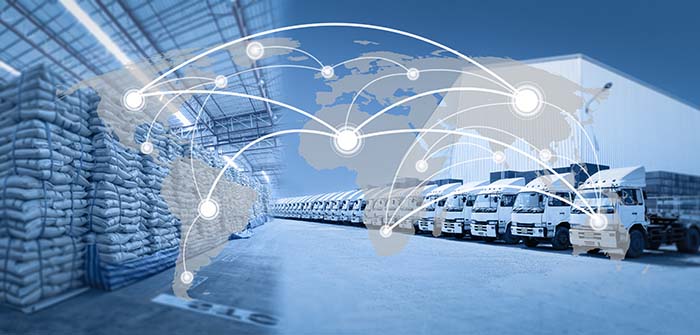They say that necessity is the mother of invention. A prime example is the way that the rapid acceleration of online shopping is forcing e-commerce parcel shipping and supply chains to evolve. This evolution will likely continue throughout 2022, so here are six predictions for trends that will emerge or intensify over the course of the next 12 months and beyond.
Carriers will be all-powerful over the next 12 months
In 2022, most shippers would be wise to stick with their existing carrier partners and hold on to the agreements they have in place. The rapid rise in demand for e-commerce deliveries means even the biggest carriers have been close to reaching capacity limits – and turning away new business. It’s also likely that these capacity challenges will be intensified by continuing driver shortages. Unfortunately, e-commerce shippers with lower delivery volumes will be affected most, as carriers will give priority to their bigger customers.
Despite the carrier capacity challenges, shippers should avoid going out to tender for replacement carriers if possible. Companies that have tried to switch or renegotiate with their existing carriers have found that they’re being offered less attractive terms than in their existing agreements.
More e-commerce parcels will be shipped by gig-economy couriers
During the pandemic, we have all become accustomed to restaurants, supermarkets and grocery stores leaning toward on-demand messenger and courier services to provide additional delivery capacity as online orders skyrocketed. Not only will this trend continue but we’ll increasingly see other retail sectors adopt gig-economy providers as they try to get orders from their stores to customers’ doorsteps within a few hours.
Whereas many traditional carriers struggle with two-hour delivery windows, Uber, Lyft and other gig-economy couriers are showing they can excel at it – and not just for grocery delivery. For example, Currys, the UK consumer electronics retailer, has partnered with Uber Eats to offer customers in London the ability to order emergency deliveries of phone chargers, printer cartridges and other items in as little as 30 minutes. Similarly, Walgreens Boots Alliance in the US is partnering with the likes of Uber and DoorDash for same-day delivery.
Expect more partnerships and acquisitions as retailers try to take on Amazon’s delivery capabilities
Retailers will forge partnerships and coalitions and acquire other companies as they try to compete with the huge power of Amazon’s shipping and delivery capabilities.
In the US, for example, Home Depot was the first retailer to sign up to use Walmart’s delivery-as-a-service business, which ships online orders for other retail brands. By using Walmart’s delivery capabilities, Home Depot hopes to move a step closer to offering same-day or next-day delivery to 90% of the US population. Similarly, Ahold Delhaize, the merged grocery conglomerate, has made several acquisitions to help it switch to a self-distribution model as part of its supply chain transformation. The company’s goal is to build a faster transportation capability to satisfy e-commerce demand while improving cost control. Experts suggest these developments are in response to Amazon’s drive into the online grocery sector.
Say hello to more pop-up e-commerce distribution centers
Pop-up distribution centers operate in a similar way to pop-up shops, enabling retailers to respond to local surges in demand quickly and cost-effectively. Recently, we’ve seen more organizations, including the likes of Walmart and Hermes, relying on them as e-commerce orders have accelerated.
Shipping parcels long distances from major regional e-commerce distribution facilities obviously involves longer delivery journeys. Having the ability to create local pop-up centers, perhaps by renting warehouse space on a temporary basis, can decrease delivery time and relieve the pressure, enabling consumers to receive their orders sooner.
International parcel shipping numbers will continue to climb
Alongside the rise in domestic e-commerce during the pandemic, people are becoming more open to shopping online from retail sites based in other countries – creating ongoing demand for international parcel shipping. For example, Shopify, the leading e-commerce platform, recently introduced additional support to help merchants overcome the challenges they might face in supporting cross-border sales (such as facilitating currency conversion, regional SEO and website localization).
According to a survey this year by Logistyx in the US, UK, Germany and Australia, 57% of online shoppers purchased cross-border during the pandemic. The data suggests that clothing and footwear are likely to be the most common categories for future purchases.
Expansion is on the cards for drone delivery
Although it’s not going to be commonplace, we’re likely to see more examples of drone deliveries – especially for getting quick, critical parcel deliveries to remote locations.
For example, Alphabet subsidiary Wing is already using drones to drop off products in certain locations in Australia, Finland and the US. Irish company Manna is running live autonomous drone delivery in Galway, with licenses to take its services to European Union countries and Canada.
Currently, most drone delivery activity is confined to communities that have received special permission to pilot these services and we can expect these cases to increase. Drones make sense in certain vicinities and for certain products – like rural or remote locations and for high-value products such as pharmaceuticals and medicines. Importantly, the economics and practicalities must work. While the idea of drone delivery in big cities grabs people’s attention, bikes or electric vehicles are much more realistic.
These are just a few of the ways in which parcel shipping is evolving as it reacts to the transformation of e-commerce.


